November 18, 2020
Welcome to the ultimate pour over vs immersion brewing face-off! There won’t be an official winner, as these different extraction methods aren’t one better than the other, but we’ll discover which one would work better for you. Feeling powerful? As you should.
The differences between pour over and immersion brewing
The final cup of black coffee will look pretty much the same regardless of whether you’ve brewed it with a pour over or immersion method. Will it taste the same, though? No, sir, it won’t! Flavors aside, the process will also influence your morning routine… for the better or the worse.
Pour over methods (drip coffee)

What is commonly known as drip coffee consists of pouring hot water over a bed of coffee grounds: as it falls through them, it extracts the coffee. Pour over is a type of drip coffee that, unlike the pots of joe made with machines, was brewed manually.
Pour over coffee makers include all-time favorites such as the iconic Hario V60, the beautiful Chemex and the practical Kalita Wave, as well as lots of newer models.
Thanks to the way the water drips through the grounds (usually medium-sized), pour over methods allow you to highlight the complexity of your coffee, appreciating all of its nuances and depth, especially when you use single-origin beans. That’s why most baristas prefer pour over methods.
However, this also translates into a steeper learning curve. Practices such as pulse-pouring must be perfected to avoid problems like channeling, the uneven extraction of your grounds.
As for taste, pour over coffee is smoother and with a lighter body than immersion brewing methods, especially when it involves paper filters that trap the beans’ oils. A blessing if you can’t stand sediments in your mouth!
Basically, because you’re involved with the process from start to finish, pour over brewing allows you to turn your morning coffee into a precious ritual, and it’s best suited for those who enjoy learning more about extraction.

PROS
- Smooth, nuanced and sediment-free brew
- Barista-style experience
CONS
- Steeper learning curve
- Requires your involvement from start to finish
Immersion brewing methods

As the name suggests, this method relies on coarser coffee grounds being immersed in water and left to steep until they’re fully extracted.
The most common immersion brewing method is the timeless French press, but you might also have heard of cold brews or the innovative AeroPress.
Rather than skillful pulse-pouring techniques, what makes or breaks your immersion brew is time. However, in most cases, you don’t actually need to be as involved with the process! For example, a French press would be a better choice if you’re usually in a rush and would rather have an extra 4 minutes to get ready while you let your coffee steep on its own.
The difference isn’t just in the process. Since metal filters allow the oils to fall into your cup, this coffee will be more rounded, robust and with a heavier body than pour overs (and some potentially unwelcome sediments, sometimes). Some immersion brewing methods, however, involve paper filters instead, such as the AeroPress or Clever Dripper: the final flavor will be something in between traditional French press coffee and lighter-bodied pour overs.

PROS
- Bolder and more robust taste
- Easier and can be left to steep on its own
CONS
- Sediments
- Less nuanced flavor
Now that you know all the differences between them and how certain methods could revolutionize your morning routine, which one won the pour over vs immersion brewing face-off, for you? Grab yourself the best coffee for it and let us know in the comments. We’re curious now.
Leave a comment
Comments will be approved before showing up.
Also in Fire Department Coffee News

Celebrating America’s Firefighting Presidents

Fire Department Coffee and Kidde Working Together to Promote Fire Safety
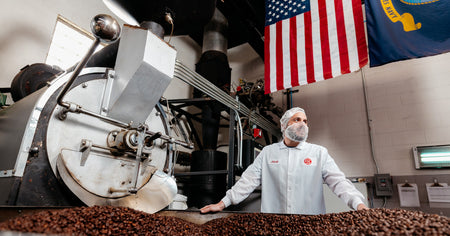
From Barista to Coffee Expert: Fire Dept. Coffee's Jacob Ball Brews Success
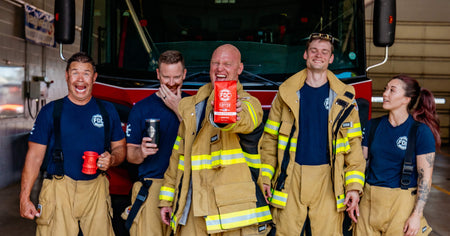
Get to Know the Hilarious, Hardworking Team Behind FDC Videos

From Fan to Family: How Lance Woodruff Became an FDC Star

Marine, Musician, Firefighter: Josh Kennedy is Doing It All
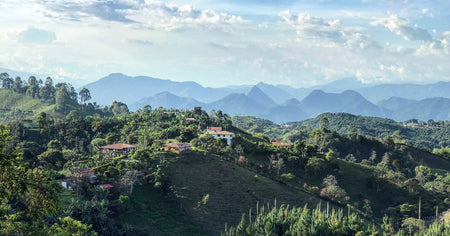
January's Coffee of the Month Club Kickstarts a Journey to 100% Direct Trade Coffee

FDC Mobilizes Rosenbauer Fire Truck for Tennessee Tornado Relief
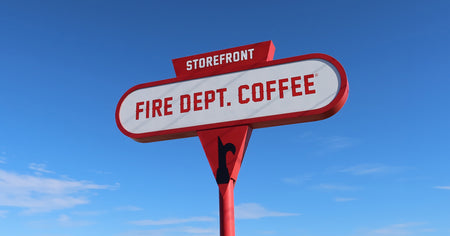
Fire Dept. Coffee's First Retail Shop Opens in Rockford, IL
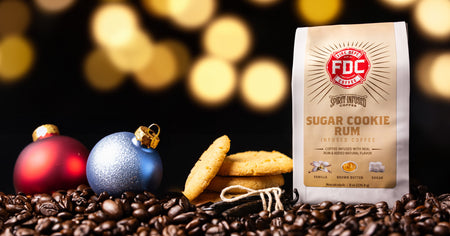
Sugar Cookie Rum Infused Coffee - Spirit Infused Coffee Club

Fire Dept. Coffee Bound for Walmart Shelves After Open Call Event

Raising Our Mugs for Firefighter Appreciation Month
FOLLOW OUR JOURNEY, GET SPECIAL OFFERS AND PROMOTIONS
- SPIRIT INFUSED COFFEE
- Bourbon Infused Coffee
- Whiskey Infused Coffee
- Rum Infused Coffee
- Tequila Infused Coffee
- Spirit Infused Coffee Club
- Spirit Infusion Process
GEAR
© 2025 Fire Department Coffee, Inc.











